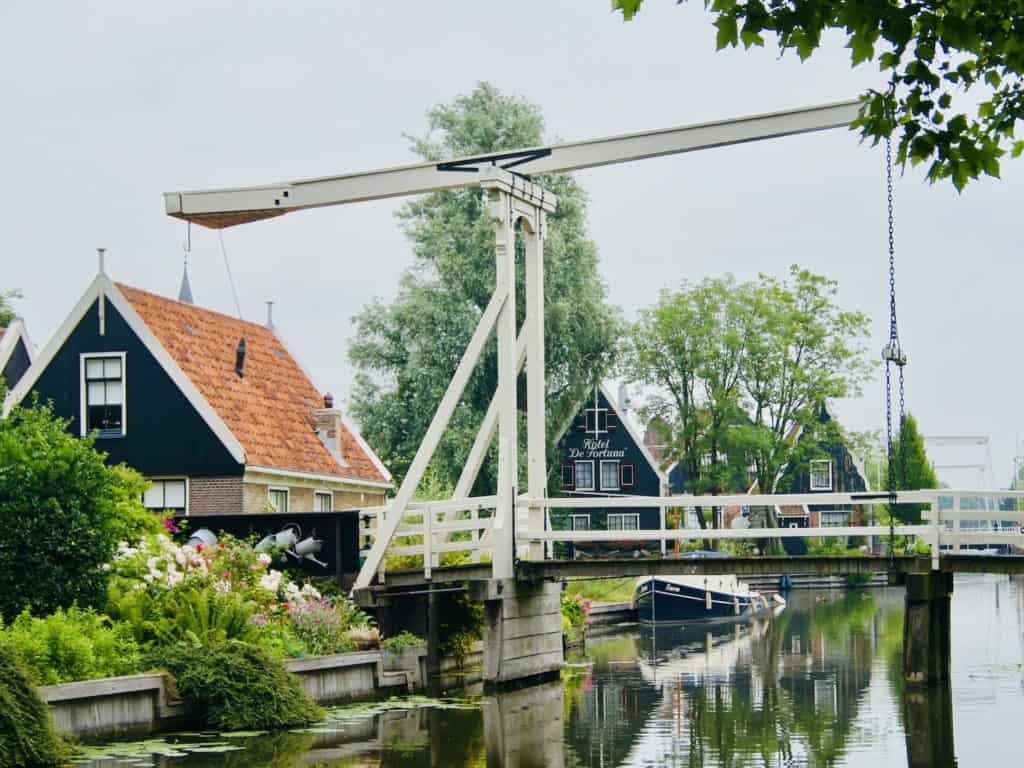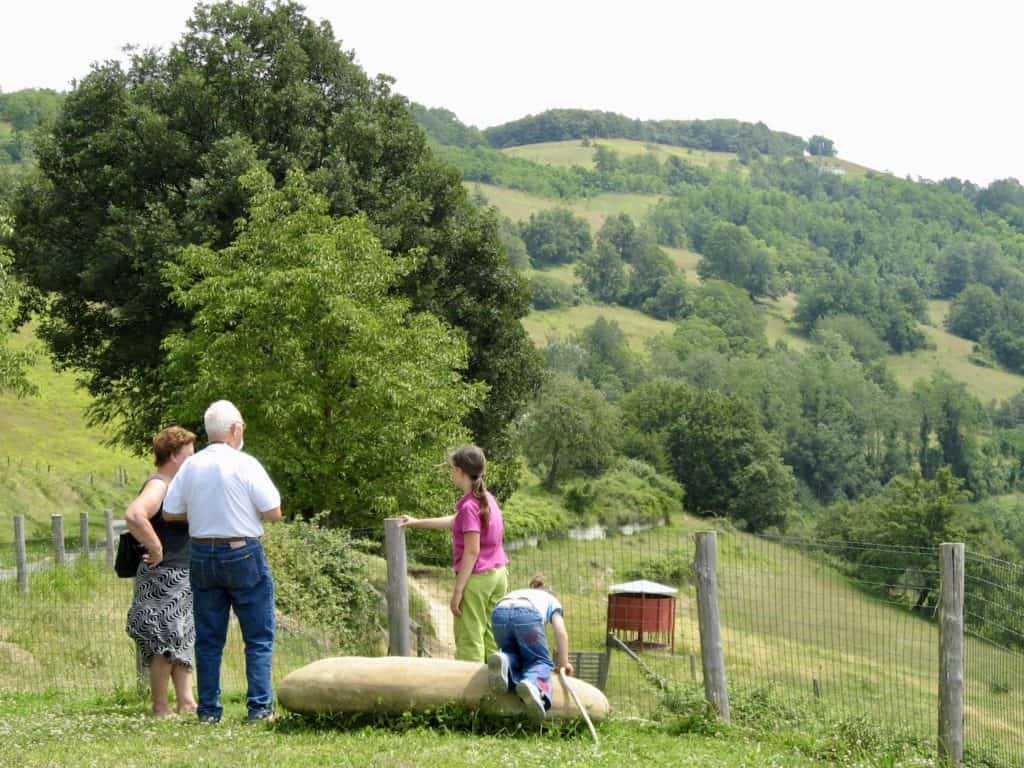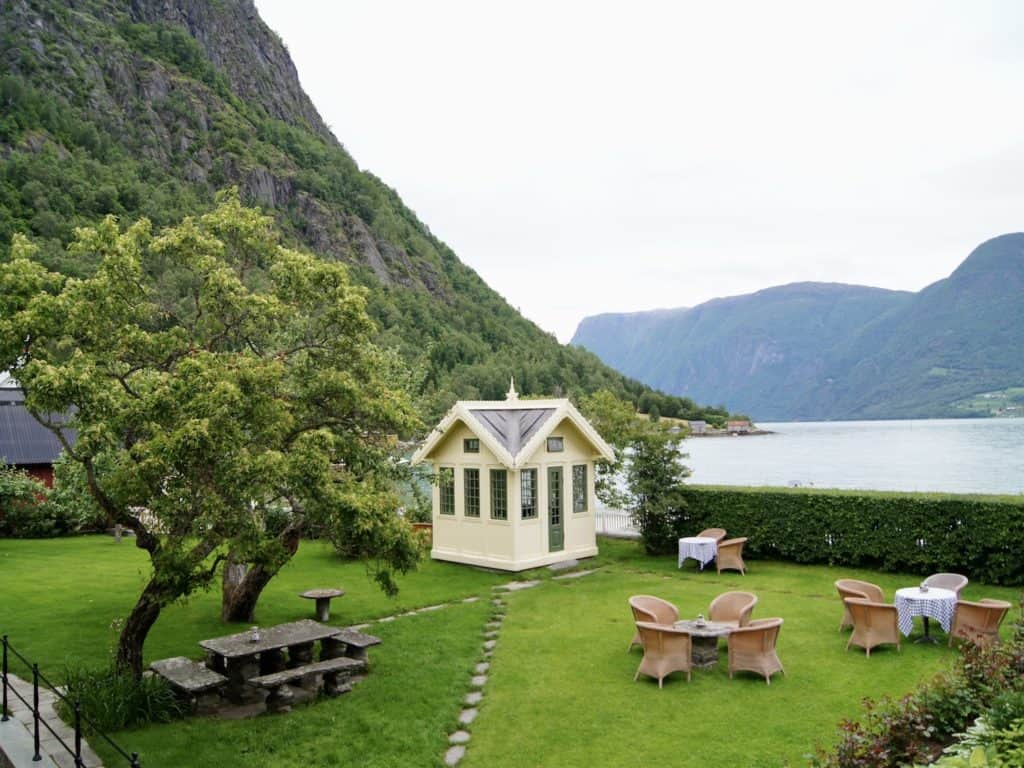One of the most visited places in Greece, Santorini is a delight to visit. Making this a stop on a trip to Greece is most enjoyable in the shoulder seasons (on either side of the peak summer season) as it will be much less crowded — and, thus, a better overall experience.
Santorini became well known for its caldera — a unique formation created by a volcanic eruption from 1600 BCE whose tsunami likely wiped out the Minoan society in Crete. The word caldera is a Spanish term that is derived from the Latin word meaning “cooking pot.” It is said that the volcano was the strongest in 10,000 years.
Our Greece Itinerary
With traveling, there are always trade-offs given the time allotted for the visit. My husband and I began our Greek soujourn in Athens and visited its highlights over three days; then we began our island hopping: Crete, Rhodes, and Santorini.
If a trip to this beautiful country is in your future, check out trip planning ideas and tips for a two-week trip to Greece, driving tips for Greece along with the best of Rhodes and Crete.
Overview of Santorini
The earliest inhabitants were the Minoans who came from Crete between 2000-1600 BCE. The settlement at Akrotiri (on the southern tip of the island) is where they were believed to have lived. Later on, the Venetians and Turks occupied the island.
A few millennia ago, Santorini was circular. But a violent volcanic eruption around 1600 BCE caused the center of the island to cave in. That explosion created a caldera, a large crater, that was filled in with water from the surrounding Aegean Sea. Although many think of Santorini as one island, it’s really more than that with a few other islands that resulted from the volcanic eruption. Nevertheless, most people think of the largest part, a curved piece of land — shaped like a croissant — as Santorini. That’s where the tourists flock in search of the impressive views of the white-washed buildings, blue domes, and amazing sunsets.
TOP 6 THINGS TO DO IN SANTORINI
1. View the Sensational Sunsets
Santorini is known for its gorgeous sunsets that are viewed from the western rim of the island. The best spots are in Oia — on the northern tip of the island. If you’re in Oia a few hours before sunset, you’ll see people start to congregate along ledges and walls perched high above the sea. If you stay at one of the cliff-side hotels or resorts in Oia, you’ll also see sailboats, catamarans, and yachts migrate to the best-unobstructed view of a sunset below the sea (not obstructed by land). They point their bows into the wind, towards the west, in anticipation of the evening show. When the sun slides into the sea, you’ll hear cheers, clapping, hoots, and hollers. Then the boats turn around and head back from where they originated…and the people in town head for their evening meal in town.
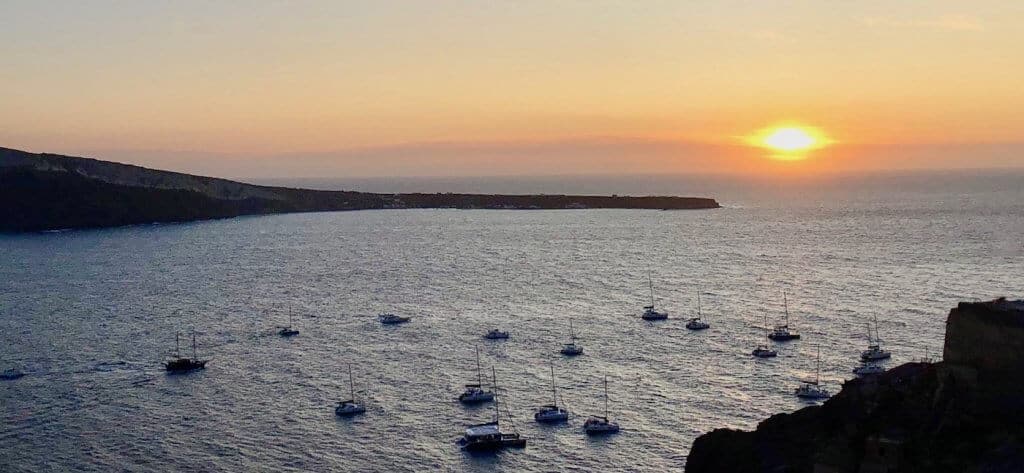
2. Hike Along the Santorini Caldera Rim
There is a 6.5-mile hike along the west coast of Santorini from Fira to Oia that is a must-do for many visitors. You’ll pass through two small villages (Firostefani and Imerovigli) along the way. It certainly was on our list of things we wanted to do. The views from the path are worth the time (3.5+ hours) it takes. You could start the hike in Oia, of course, but we were advised to begin in Fira since there were fewer steep inclines. Starting in Fira, you’ll be about 270 meters high. The highest point along the hike is in Imerovigli which is about 350 meters high.
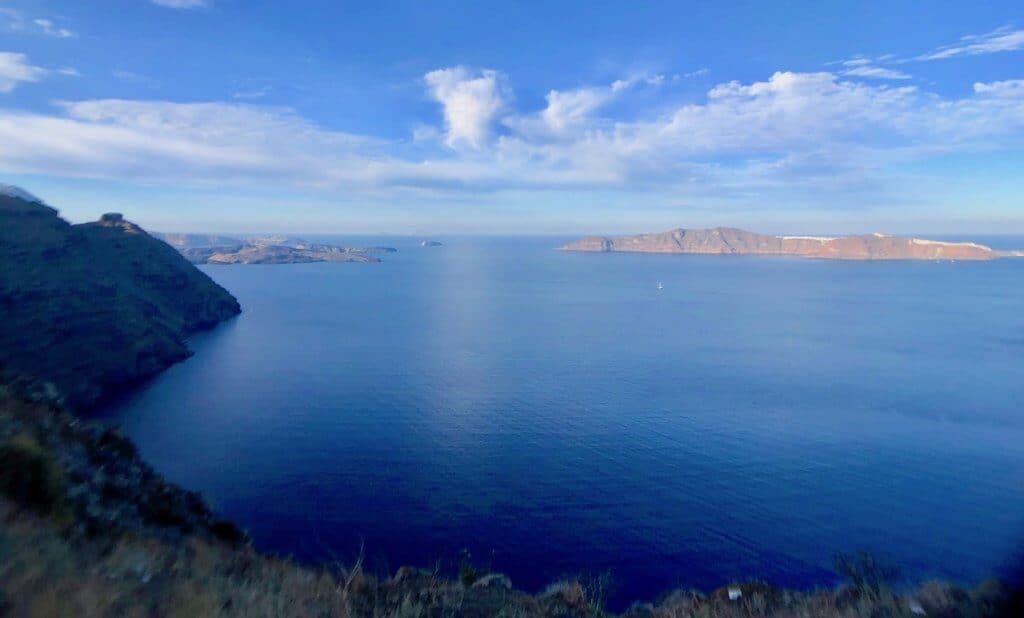
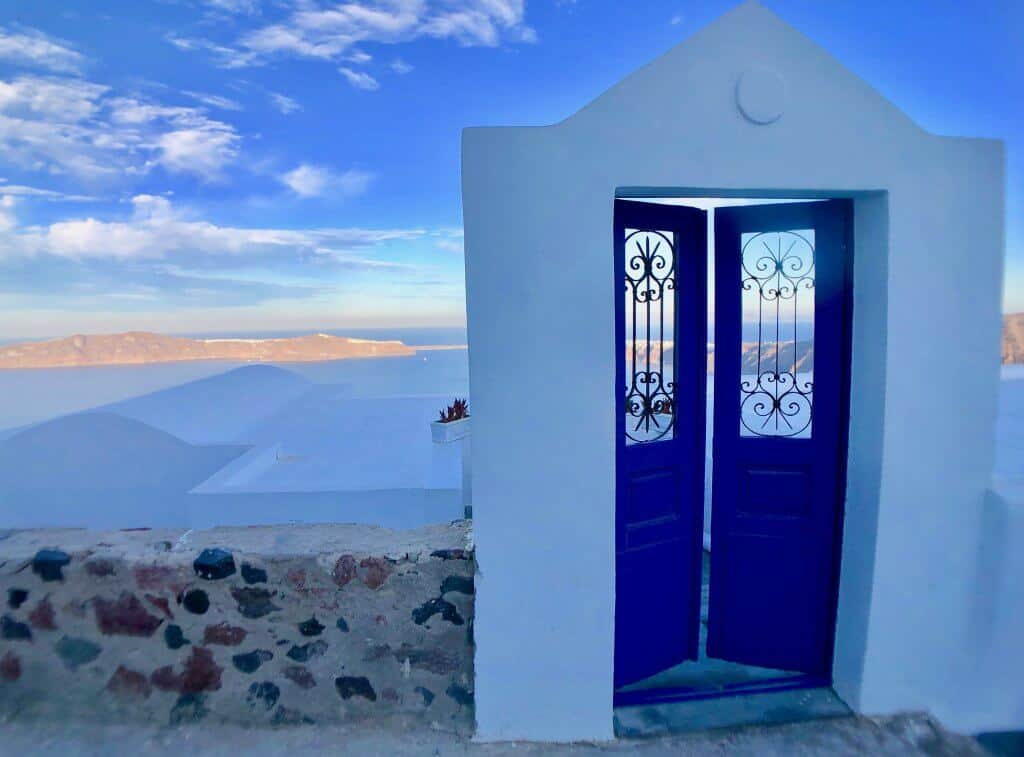
Caldera Hike Tips
- Always keep the sea on your left. This will prevent you from accidentally taking a detour.
- Wear good walking/hiking shoes as part of the path has lose gravel that could prove difficult to walk on with flip flops or sandals.
- If staying in Oia, get a ride to Fira close to the beginning of the path (which is near the Hotel Atlantis, just up from the central church in town).
- Start early in the morning so you reach the endpoint for a late breakfast/brunch. If you start early, you’ll enjoy the great views without the overhead sun. You’ll also be trekking during the coolest part of the day with few other hikers — it’s like you have the scenery all to yourself. If you begin the journey later in the day, you’ll be dealing with sun glare as you look out over the caldera (that will be to the west of you).
- Take water with you! Even if you’re not walking during the heat of the day, you’ll want water. (We passed a couple who left Oia, heading to Fira, who had to turn back because they didn’t bring water.)
- Take a snack if you think you’ll need one. There are a couple of markets along the way, but they are not always open.
Caldera Hike Landmarks From Fira to Oia
- Begin in Fira around the Hotel Atlantis. You’ll be walking along a paved path, winding through a shopping area and then past some resorts.
- At the Blue Note restaurant, you’ll have two choices. Left or right. Walk along the left to continue taking in gorgeous sea views.
- You’ll notice Skaros Rock on the sea side. It’s a large rock with a path leading to it. Go ahead and enjoy the view from its apex if you have time.
- At Ekklisia Profitis Ilias, there’s another fork in the road.The left side continues the scenic path, but there’s a lot of loose rocks. We took this route and watched our steps carefully. We’re told the right side is an easier path, but then you would miss the views.
- At the bus stop, begin walking on the road for a short while before returning to the path. Watch out for cars!
- You’ll end up in Oia. If you began early in the morning, it’s now time for a late breakfast or lunch. Enjoy!
We started our hike at 7:00 am, and it took us 3.5 hours. That time included frequent stops to admire the views. We didn’t pass many other hikers until about two-thirds into our hike. The path changed quite a bit from smooth asphalt through Fira and past resorts and hotels to cobblestones, dirt, and loose rocks. The views of the caldera were breathtaking. You really get a better understanding of the topography of the area — and the southern rim of the caldera — on the hike because your vantage point comes from a high elevation along the mountain.
3. Visit Akrotiri – A Huge Step Back in Time
There was a settlement of people living here as far back as 3,000 BC. Akrotiri had an administrative center and homes. There’s evidence of trade with Crete (79 miles to the south), Egypt, Syria, Cyprus, Turkey, Libya, and other Greek Cycladic islands. Scientists know this because of the frescoes that were unearthed and are now housed in the Museum of Prehistoric Thira in Fira.
The town flourished because of its merchants and trade. From what has been unearthed so far, scientists believe that the town imported raw materials like clay (from Crete as clay is not found on Santorini) and bronze. Using these raw materials, craftsmen transformed clay into vessels/vases and bronze into weapons to be traded/bartered. (Coins used for purchasing things were not yet used at this point in history.) They also exported wine and olive oil in the large clay vessels/vases. Interestingly, they labeled the contents of the vessels with red streaks (signifying wine) or brownish streaks (signifying olive oil) on the outside of the vessels.
When the huge volcano (over 3,200 feet high) erupted around 1650 BC, the explosion reconfigured the Santorini topography and covered this village with lava. Archeologists began uncovering the finds in the 1960s. Today, about 10% of the site has been excavated. When visiting, you walk through the part that has been uncovered. This is an active archeological site. Scientists are continuing their work on the site. Fortunately, there is a roof over the site to protect visitors as well as the archeologists from the harsh Santorini sun.
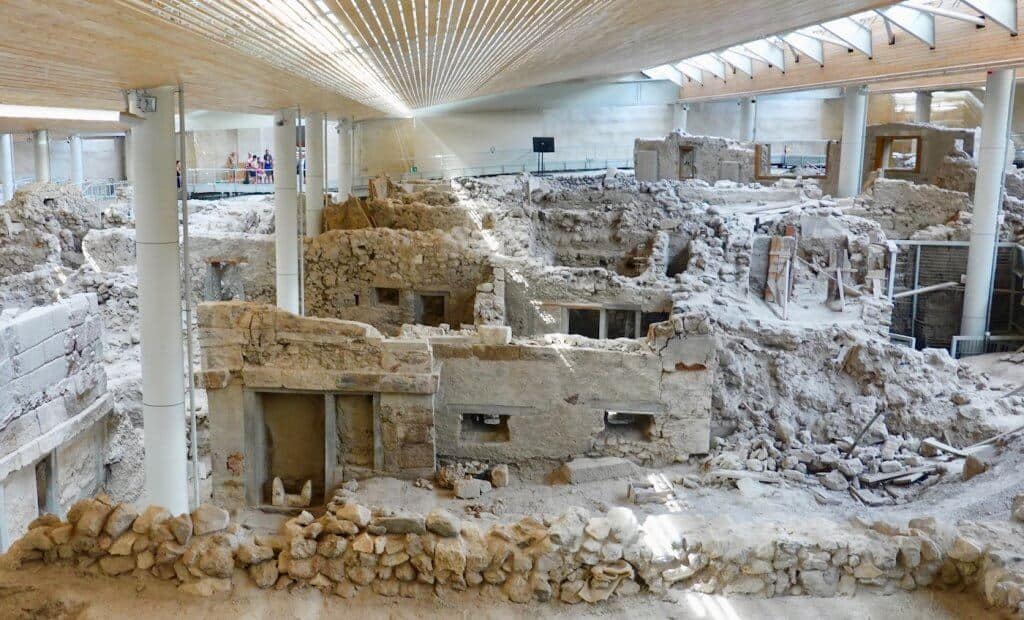
In the excavated site, you’ll see 32,000 square feet worth of houses. Incredibly, for the time period, houses had indoor plumbing with toilets, and the town had a sewage system. There are lots of frescoes, storage vessels/vases, and mosaics from the archeological site in the Museum of Prehistoric Thira in Fira. The houses had 3 floors and the highest one was over 30 feet tall. Roofs were made of lumber from pine trees found in Crete. Archeologists have uncovered evidence of furniture (tables and beds). Since furniture was made of wood, the pieces did not survive, but scientists used a process of filling cavities found in the volcanic debris with a substance that takes the shape of the cavity. Then, after removing the surrounding substance, scientists have concrete evidence of early furniture styles.
What happened to the people who lived here? There are several theories, though no one really knows since the excavation work is not complete. One theory is that many left to travel by ship to Crete (a friendly area that wasn’t too far away), but that many died in a huge tidal wave created by the volcanic eruption.
4. Sample Santorini Wines
The wines of Santorini are a result of a lot of work and very little rainfall. This island gets a scant amount of rain during the growing season and only about 14” annually. In fact, the primary source of moisture is dew. Vines are spaced a little more widely apart than in other wine growing regions to take advantage of that precious dew. Although this helps to explain the soil’s low yield, the results reward the vineyards’ efforts. There are several wineries to enjoy in Santorini.
The local grape assyrtiko is used to make dry, white wine and Vinsanto, a dessert wine. We were planning on visiting some wineries while on Santorini, but decided (after some busy days elsewhere on the island) to sip wine poolside at our hotel.
5. Visit a Beach
There are quite a few great beaches to visit — mostly on the southern and eastern coastlines. There’s Red Beach, Black Beach, and White Beach — so named for the color of the cliffs above them. Perissa, Agios Georgios, and Perivolos are known for being lively (think lots of bars and nightlife) and watersports opportunities. Many beaches have cafés and beach bars, while others are more secluded (like White Beach). If beaching is on your agenda, you can book your sunbed/lounge chair online.
6. Stroll, Shop, Snap
Take time to stroll through town. Stop to shop. Take some great pictures to capture the beauty of Santorini. This island is full of amazing architecture and natural beauty. For example, in Oia, you can’t go far while walking in town without coming across a perfect photograph opportunity: whitewashed buildings, gorgeous flowering shrubs, or even a cat lazing in the sun.
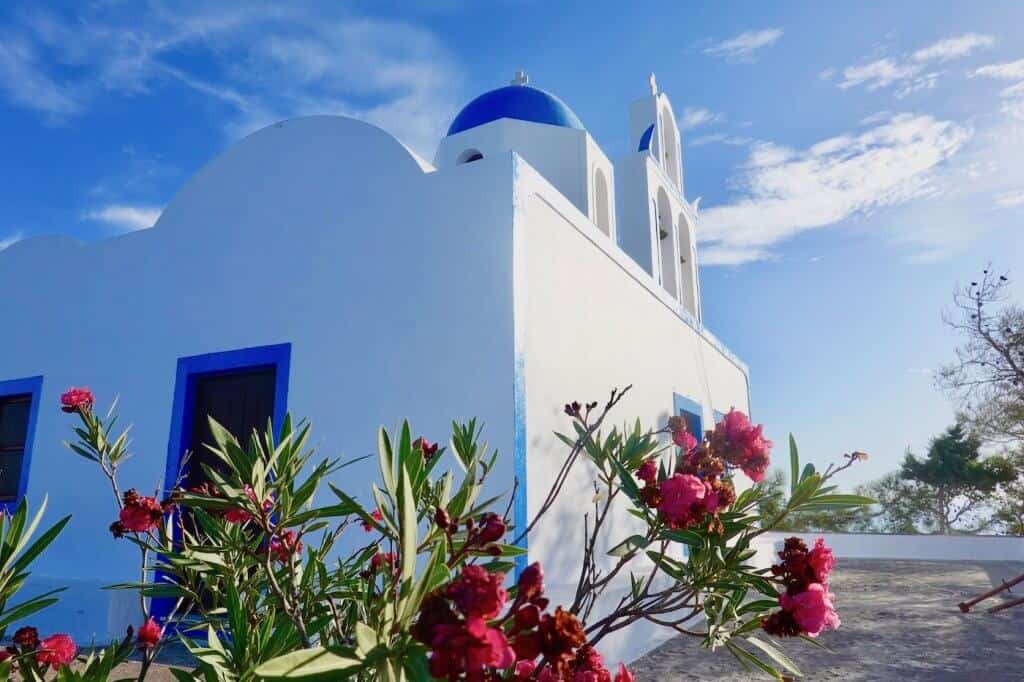
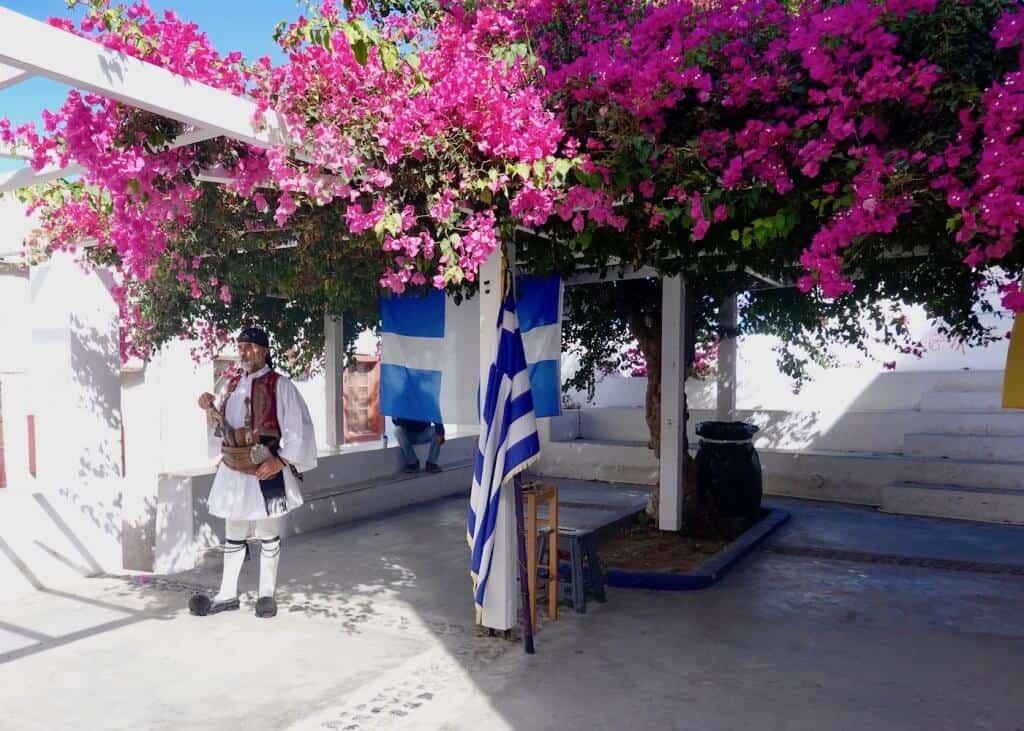
Where to Stay in Santorini
I recommend finding a hotel in Oia, on the northwestern edge of the main island. There are lots of lodging options in the capital, Fira, in the central part of the island, but Oia gives you the benefit of being the ideal spot to view the sun slide into the sea each evening.
In Oia, there are plenty of hotels and resorts built into the side of a cliff. Where we stayed, Esperas, every room has a view of the caldera. There’s a pool, a bar, and a very good restaurant, so you really don’t have to leave the property much if you don’t want to.
Speaking of the hotel restaurant at Esperas, the food and service was excellent. The view was stunning. Dining while viewing the celebrated Santorini sunset. Perfect! We actually enjoyed the setting, food, and service so much that we had more than one dinner there. Frankly, going off site in the afternoon or evening is not relaxing due to the hordes of tourists (many from cruise ships anchored by Fira) that pack the pedestrian-only areas.
Having mentioned the crowds, we did enjoy a wonderful meal at Roka, a restaurant that prides itself on traditional fare and has an inviting casual setting. An excellent choice. Despite a photograph on their website, this restaurant is off the main pedestrian path/road in Oia. You’re not going there for the view; here, it’s all about the food, wine, and ambience.
Venturing Out from an Oia Hotel
If staying in one of the cliffside hotels in Oia, you have a few options:
- There are steps (a lot of them!) down to the small harbor port with restaurants. While enjoying your snack or meal at one of the restaurants, you can enjoy water views and activity on the water as boats come and go. Be forewarned, however, that there are many steps — and remember that you need to climb them again when returning from the harbor! There are donkeys available to help you back up the steps, but not many people used them. However, where there are donkeys, there is donkey waste — which was quite evident on our journey down and, later, up the steps.
- Steps away from the hotels is the downtown of Oia where there are plenty of restaurants and shops. We found that you don’t really stroll or window shop here. From mid-day till evening, the pedestrian-only paths in town (not really roads) are so congested with tourists (those staying in Oia and cruise ship travelers bussed from Fira where the cruise ships dock), that I call it the Santorini Shuffle. So if you want to shop, start early!
- Leave Oia to hike the caldera rim, visit an ancient archeological site, visit wineries, or lounge on a beach.
Should You Rent a Car on Santorini?
My husband and I often rent cars when we travel which gives us flexibility in visiting places that interest us. We were actually advised not to rent a car while visiting Santorini since we were staying in Oia. This is because there is limited parking, and there are so many people (and tour busses) visiting the town all day long. People begin arriving in the morning for a guided walk through town with their bus tour groups, some come for the afternoon to stake out their places to watch the sunset, and many stay for dinner in town. Therefore, we opted to use the hotel’s van service to get to Fira to begin our hike along the caldera, for example, which was a 35 minute ride. For a visit to the Akrotiri archeological site, we took a guided tour arranged by a tour company; this tour was booked by our hotel’s concierge.
Understand Greek Spelling Variations
When planning a trip to Greece, keep in mind that the English spelling of some Greek words can vary quite a bit from one resource (guide books and websites) to another! For a neophyte like me, I was easily perplexed about town names. For example, I found a variety of spellings when exploring travel options on Santorini. For example, the town we decided to stay in is Oia, but it is sometimes spelled Ia; its pronunciation is EEE-ah.
As it turns out, multiple spellings for one place is fairly common due to the different ways Greek words/letters are rendered into Roman letters. Once I realized the issue, though, things became more clear (sometimes).
Final Thoughts
We chose to visit Santorini for a few days because, well, we didn’t think we could NOT visit one of the most iconic spots in the country. What we didn’t realize beforehand is how much we would enjoy our time there. Relaxing over breakfast on our balcony each morning, exploring the island, lounging by the pool and eating dinner with that endlessly beautiful view is hard to beat! If you have time in your schedule for a trip to Santorini, go for it!
A final note about Santorini: Check with your hotel about drinking tap water. We were advised not to drink tap water except in Oia where there is a desalination plant.
To make sure you remember all the great experiences on your next trip — be it to Santorini or somewhere else — take lots of pictures and create a photo book of your journey when you return home. You’ll be glad you did!
This was one of our stops on our visit to Greece. For more information on planning a trip to Greece and where to visit, check out these other posts:
- A Guide for Two Weeks in Greece
- Driving Tips for Greece
- Top 8 Places to Visit in Rhodes
- A Visitor’s Guide to Crete
Comments?
If you’ve visited Santorini and have suggestions for other travelers about this beautiful island, go ahead and let us know your thoughts. What spots were your favorite? Why? Inquiring readers want to know! Thanks! 🙂

